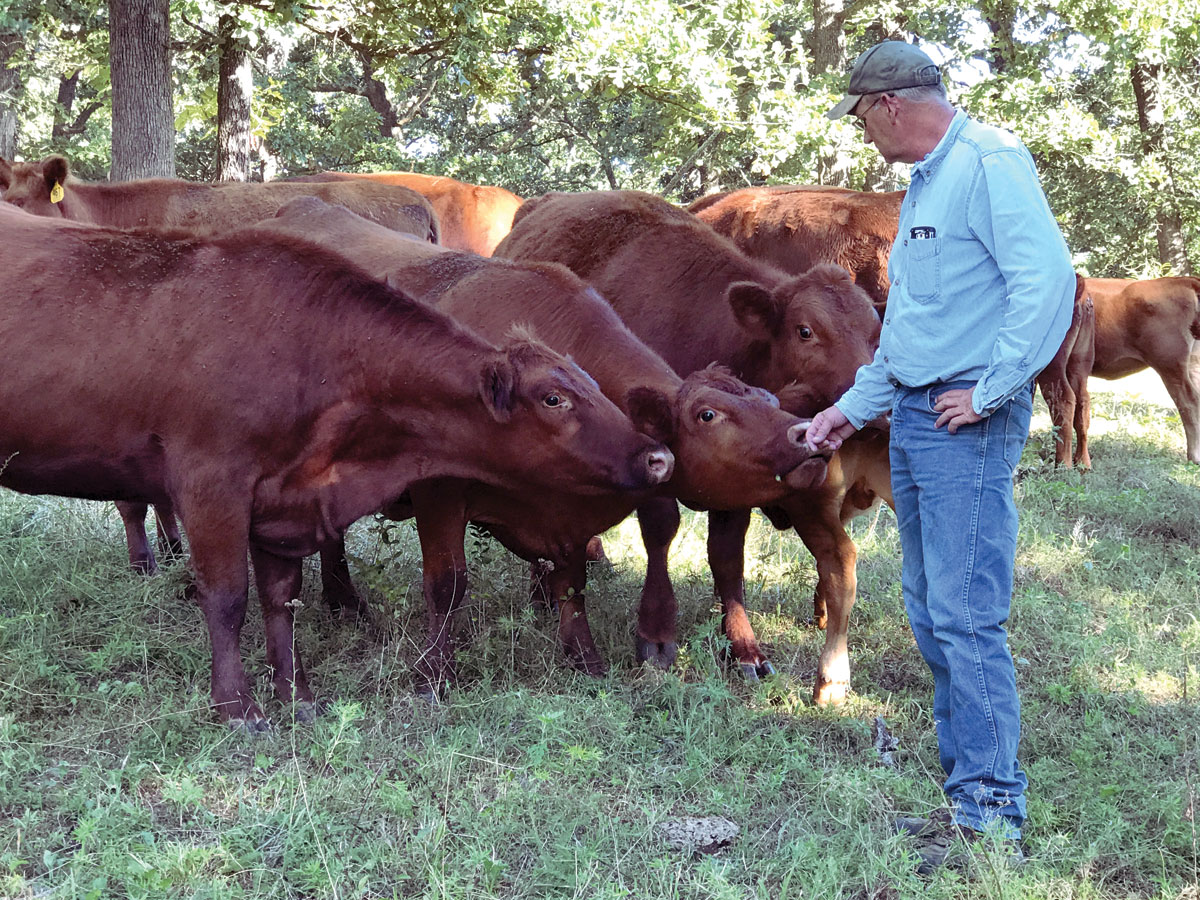
Glenn Brown’s life has changed dramatically nearly every decade. He was born and raised on a small farm in rural Copan, Okla., near Bartlesville. Both his grandfathers were farmers, and both his parents grew up on the farm. When talking about the country, Glenn said, “When your roots are there, you lean back in that direction — at least I did.” After 40 years, Glenn went back to his roots.
Glenn worked most of his life in the trucking industry. After a few years of driving for several area companies, he began his career with CFI in Joplin as a driver in 1976 and by 1986 had climbed all the way to the top. He served as President and CEO before retiring as Chairman of the Board less than two years ago. As a result of his efforts, the company grew from a local carrier to a national force.
When Glenn started thinking about retirement, he began researching. While many people, especially those who had grown up with cattle, would have just jumped into the business, he took the scientific approach. Glenn said, “After being away for 40 years, I had to pick up on the changes.” He read books and studied articles on the internet before he settled on raising Angus cattle.
He bought 500 acres of pasture land and started working to make it his own. When Glenn and his wife Randy looked at the acreage, they decided it was “their diamond” so they named their ranch after the Spanish word for diamond, diamante. Their diamond required a large amount of work before it was ready for them though. They tore down old fences and cleaned up pastures, bulldozed dilapidated outbuildings and built new, and built their home on their rural ranch.
Glenn started in the cattle business by buying a small commercial herd, and he learned more. He attended schools and seminars on intensive grazing, artificial insemination, birthing, grading and he watched his cattle. He observed that on the hottest days in the summer, red cattle would still be grazing while the black cattle were hiding in the shade. This prompted a decision to go with Red Angus, and he started to build his herd.
He bought some high quality local stock and also purchased cattle from Iowa. For the next four years, he utilized artificial insemination to improve his herd. Their conception rates were around 60 percent, so he decided to purchase some herd bulls from Colorado to follow up. Today he looks for sires that have the genetics for reduced grain consumption. He strives to produce high quality cattle that use feed efficiently. His ideal cow is low maintenance, entirely grass-fed, gains weight rapidly, weighs 1,100-1,200 pounds, has good maternal instincts, good milk production and produces healthy and vigorous calves that have a low birth weight. He tries to keep his cattle in the top 20 percent of the breed.
Glenn keeps meticulous records. They weigh calves 24 hours after birth, at weaning, and again at the year mark. With the help of his ranch foreman, Burley Sparlin, he makes the decisions on which animals to keep and which to cull.
After his herd was established, he started selling bulls by private treaty. He has never had a production sale and doesn’t plan to. His plans for the future do not include expansion of acreage or herd size, but rather endeavoring for even higher quality cattle. He hopes to have cattle in the top 10 percent of breed standards, and he wants to do it without high feed costs. They grow their own hay crops of alfalfa and bermuda grass, so the cattle receive quality feed, but not grain. Glenn says he strives “to provide top grade bulls to produce stronger, faster growing offspring.”
Just like Glenn helped build a small trucking company into a major power in the industry, he has gone from a small foundation herd to over 370 head of choice cattle. One can only guess what successes the next decade will hold for Glenn and Randy Brown.







